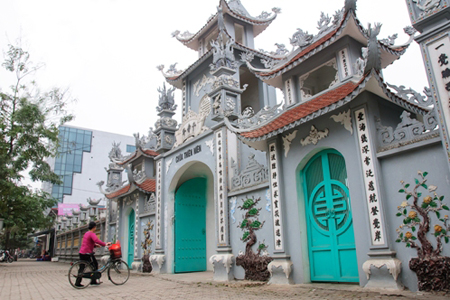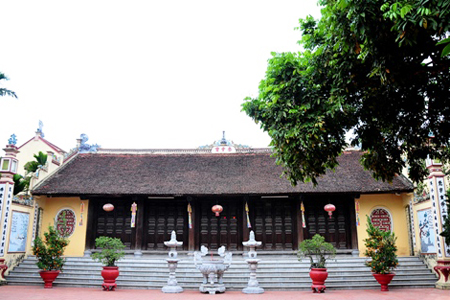Nestled near the West Lake, belong to Buoi commune, Tay Ho district, in the northeast of Hanoi, Trich Sai village is one of ancient villages preserving diverse cultural values and charms of Thang Long – Hanoi.
Historically, Trich Sai village was well-known for its silk cloth. It was said that King Le Thanh Tong (1460-1497), sent one of his concubines, a Cham girl named Phan Thi Ngoc Do, and 24 maids to Trich Sai village to taught villagers how to grow mulberry trees, raise silkworms and weave silk. The silk cloth made by the Trich Sai villagers became famous and was sold locally and exported. While the people of Trich Sai long ago ceased weaving silk, local people are aware that silk was once the pride of Trich Sai village on the shore of West Lake.

Trich Sai has a series of pagodas and temples and communal houses dating back to thousands years. Thien Nien Pagoda and Phuc Loc Tho Temple are the most popular. Locals and tourists come here to delve into history.
Thien Nien Pagoda constructed under Ly Nam De (451 - 455) is one of the parts of a heritage complex comprising That Bat Hill which was erected to honor two of King Ly Nam De’s daughters who were killed by a monster.
The Phuc Loc Tho pagoda or Gia Hoi pagoda is famed for its legendary power to expel demons. According to a legend, two daughters of King Ly Nam De being Van Phuc, Van Loc went to Long Do Mountain in Trich Sai village to kill the legendary nine-tailed fox that was a danger for local people. However, they could not kill the animal themselves, so they asked a female magician named Van Tho for help. Thus, the Phuc Loc Tho pagoda was built to worship all the three women.

Although the village has seen several changes over the years, it still remains a place for Vietnamese to remember their ancestors. The village maintains a quite atmosphere, cultural and historical values with its ancient houses, yards, streets and weaving looms.
